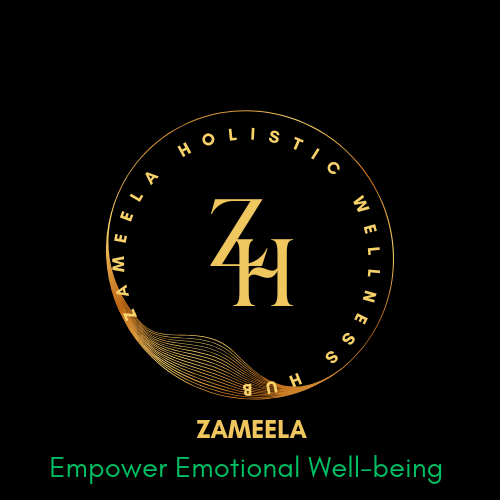Mental Health and Emotional Wellbeing-5 Powerful Strategies for a Positive Mindset
“Elevate Mental Health & Emotional Wellbeing with powerful strategies. Embrace positivity for a happier, healthier life starting now!”
Mental Health and Emotional Wellbeing – Introduction
Our whole mental and emotional wellbeing affects both of our physical and emotional health. They have an impact on everyday lives besides our relationships, jobs, and self-improvement.
Nonetheless, despite their importance, these subjects are frequently demonized and disregarded in our culture. Greater awareness of the importance of mental health and emotional wellbeing has manifested in more facilities, engagement, and awareness in recent years.

Caring for Your Mind and Soul: Nurturing Mental Health and Emotional Wellbeing
In this blog, we’ll bandy the significance of internal health and emotional good and talk about how to produce a healthy mindset to support those conditions. In order to help with your address your internal health and emotional good for a better, healthy life, we will give advice and guidance on everything from following a many ways and awareness to tone- care and social support.
Step 1: Practicing Gratitude — Boosting Mental Health and Emotional Wellbeing
Thanksgiving is a positive feeling that has a favorable effect on our internal and emotional well- being. It implies promoting the positive aspects of everyday life and giving thanks for them.
According to exploration, learning appreciation can strengthen connections, reduce stress, and boost overall happiness. This post will address the benefits of thanksgiving for Mental Health and Emotional Wellbeing as well as give useful guidance for enforcing thanksgiving into everyday life.
Benefits of Gratitude for Mental Health and Emotional Wellbeing
Numerous salutary goods on Mental Health and Emotional Well- being have been associated with thanksgiving. It can profit us in the following ways.
Reduce Stress and Anxiety
Positive thinking can increase how well we manage stress and anxiety in our life. Cortisol is a stress hormone that has been proven to be lowered by thanksgiving. Engaging in positive thinking has been shown to enhance our ability to cope with stress and anxiety. The impact of gratitude on reducing cortisol, a stress hormone, is well-documented. Embracing thanksgiving practices can contribute to lowering cortisol levels, promoting a sense of calm, and fostering better stress management in our daily lives.
Improve relationships:
Our relationships and social connections can be strengthened by showing others gratitude. Also, it can make us feel more supported and less isolated. Expressing gratitude can significantly enhance our relationships and social bonds. When we show gratitude to others, it not only strengthens the connection but also creates a sense of mutual support. This shared appreciation fosters a supportive environment, reducing feelings of isolation and contributing to the overall improvement of our relationships.
Enhance satisfaction:
It has been discovered that thanksgiving increases feelings of happiness and life satisfaction. We can have a more positive view towards life if we concentrate on what we do have instead of everything we don’t.
Tips for Incorporating Gratitude into Daily Life
Thanksgiving practices don’t have to be difficult or time-consuming. The following are some easy ways to practice thankfulness every day: Integrate gratitude effortlessly into your daily routine with simple practices. Begin or end each day by listing three things you’re thankful for.
Send a thoughtful message expressing appreciation to someone. Keep a gratitude journal, noting positive moments. These uncomplicated yet impactful actions infuse gratitude seamlessly into your life, promoting a continual sense of appreciation.
Maintain a notebook of kindness:
Every day, list three things for which you are grateful. This can assist you in maintaining your attention on the good things in your life and developing a grateful mindset. Create a dedicated gratitude notebook to document three daily sources of appreciation.
This intentional act of acknowledgment not only reinforces positive aspects but also fosters a grateful mindset. Consistently noting moments of kindness cultivates mindfulness, directing focus towards the uplifting elements of life and contributing to sustained feelings of gratitude and contentment.
Express gratitude to others: Become more mindful:
Spend a few minutes each day concentrating on the here and now and thinking about your blessings. Take a moment daily to express gratitude, acknowledging the positive aspects of your life and the contributions of others.
Reflect on your blessings, fostering mindfulness and appreciation for the present. By dedicating a few minutes each day to this practice, you cultivate a mindset of gratitude, promoting overall well-being and positivity.
Use visual cues:
Post reminders of your blessings around your house and workplace. This can assist you in continuing to focus on the good things in your life. Surround your living and working spaces with visual cues of gratitude.
Place uplifting notes or images reminding you of your blessings strategically in your home and office. These visual prompts serve as constant reminders, encouraging a positive mindset and reinforcing your awareness of the many reasons to be thankful each day.
Summary
By developing thanksgiving, you can fluently but significantly ameliorate your internal and emotional good. By fastening on the positive aspects of everyday life and thanking for those, we can reduce stress, ameliorate our particular connections, and enjoy true satisfaction. apply the habit of thanksgiving into your regular living to see what a positive impact it may have on your good.

Step 2: Mindfulness and Meditation — Nurturing Mental Health and Emotional Wellbeing
We may improve our mental health and emotional well-being and wellbeing by participating in mindfulness and meditation, which are powerful techniques. require paying proper attention to the present moment, increasing awareness, and reducing tension and anxiety.
In this post, we will discuss the benefits of mindfulness and meditation for mental health and emotional wellbeing and give advice for starting these practices.
The benefits of mindfulness and meditation for mental health and emotional wellness
A few benefits of mindfulness and meditation for mental health and emotional well-being. Between these advantages are:
Reducing stress and anxiety:
By increasing our awareness of our emotions and thoughts and reducing their negative impacts on our health, mindfulness and meditation can assist us in handling stress and anxiety. Mindfulness and meditation empower us to manage stress and anxiety by heightening self-awareness.
Through these practices, we learn to observe and understand our emotions and thoughts without judgment, preventing their detrimental effects on our well-being. Mindfulness cultivates a present-focused mindset, while meditation encourages relaxation and mental clarity.
By incorporating these techniques into our routine, we develop resilience and coping mechanisms, fostering a healthier relationship with stressors and promoting overall mental and emotional balance.
Enhancing emotional regulation:
By improving our capacity to openly monitor and understand our emotions, these strategies can help us in regulating them. To handle our emotions better, it’s important to keep an eye on them and understand what we’re feeling. This helps in regulating emotions effectively.
Simple strategies like naming our feelings and recognizing their triggers allow us to gain control. Taking deep breaths or stepping back can also create a space to respond thoughtfully instead of reacting impulsively. Practice and patience are key; as we enhance our ability to monitor and understand our emotions, we improve our emotional regulation, leading to a more balanced and composed state of mind.
Improving relationships
By boosting our compassion and empathy for others, mindfulness and meditation can improve our social interactions. Mindfulness and meditation enhance our relationships by making us more compassionate and empathetic towards others.
These practices encourage us to be fully present in conversations, understanding the feelings and needs of those around us. As we cultivate a non-judgmental awareness, we become more patient and accepting. This, in turn, fosters positive connections and deepens our understanding of others, leading to healthier and more fulfilling relationships. Incorporating these practices into our daily lives helps create a more harmonious and supportive social environment.
Increasing Resilience
By developing a more cheerful mindset and increasing our resilience to stress and struggle, mindfulness and meditation can help us are becoming more flexible in the face of challenges. Engaging in mindfulness and meditation cultivates a positive mindset, making us more resilient in handling stress and difficulties. These practices teach us to approach challenges with flexibility and adaptability.
By staying present and focused, we learn to navigate tough situations with a calmer demeanor. Regular mindfulness exercises build mental strength, enabling us to bounce back from setbacks. Embracing these habits helps foster a resilient attitude, empowering us to face life’s ups and downs with greater ease and a more optimistic outlook.
Tips for Getting Started with Mindfulness and Meditation
By developing a more cheerful mindset and increasing our resilience to stress and struggle, mindfulness and meditation can help us are becoming more flexible in the face of challenges.
By promoting a happier mindset and increasing our ability to cope with stress and anxiety, mindfulness and meditation can help us become more flexible in the face of challenges.
Starting a mindfulness or meditation routine can be difficult, but there are few simple steps you can do to get started:
Start Small:
Begin out with short meditation sessions of 5 or 10 minutes, and as you get more comfortable to the practice, gradually expand them. Start your meditation journey with short sessions, just 5 or 10 minutes at first. As you become more at ease with the practice, slowly extend the duration.
This gradual approach helps in building a sustainable habit without feeling overwhelmed. Begin by finding a quiet space, sit comfortably, and focus on your breath. With time, you’ll likely discover an increased ability to concentrate and a greater sense of calm. Small, consistent steps make the practice more accessible and eventually lead to longer, more rewarding meditation sessions.
Find a quiet and comfortable space:
Choose a quiet and comfortable space where you can focus without distractions. Find a quiet and cozy spot for your activities, free from disturbances. Opt for a space where you can fully concentrate without interruptions. Ensure it’s comfortable, allowing you to sit or lie down easily.
A peaceful environment enhances your ability to focus and engage in mindfulness or meditation practices. Whether it’s a corner of a room or a cushioned chair, creating a designated area helps signal to your mind that it’s time to unwind and be present in the moment, promoting a more effective and enjoyable experience.
Use guided meditations:
Guided meditations can be helpful for beginners, as they provide guidance and structure to the practice. For beginners, guided meditations offer valuable assistance by providing structured guidance. These sessions, led by a narrator or through apps, give step-by-step instructions, making the meditation process more accessible.
Following prompts on breathing, visualization, or body awareness, beginners can better focus their minds. The guidance helps in staying present, minimizing distractions, and gradually building a meditation routine. As confidence grows, individuals can transition to unguided sessions, but initially, the support of guided meditations acts as a helpful tool for establishing a foundation in mindfulness practices.
Practice regularly:
When it comes to mindfulness and meditation, regularity is extremely important. Attempt to practice daily basis, even if it’s just for just few minutes. Consistency is key in mindfulness and meditation. Strive to practice every day, even if it’s just for a few minutes. Establishing a routine builds the habit and maximizes the benefits. It’s better to have short, regular sessions than infrequent longer ones.
Set aside a specific time each day, making it a non-negotiable part of your routine. Whether morning or evening, find a time that suits you. Regular practice strengthens the mind’s ability to stay focused and calm, enhancing the overall impact of mindfulness and meditation on your well-being.
Be patient and compassionate with yourself:
Mindfulness and meditation can take time to master. Be patient and compassionate with yourself as you develop your practice. Remember, mastering mindfulness and meditation is a gradual process. Be patient and kind to yourself during this journey.
It’s normal for the mind to wander initially; gently guide it back without judgment. Understand that progress takes time, and each session contributes to your growth. Avoid self-criticism and embrace self-compassion. Recognize that everyone has unique experiences with these practices.
Celebrate small victories and acknowledge challenges without frustration. By fostering patience and compassion, you create a supportive environment for your mindfulness journey, allowing for a more fulfilling and sustainable practice over time.
Summary
Mindfulness and meditation are effective practices which can assist us nurture our Mental Health and Emotional Wellbeing. By growing our awareness, decreasing strain and anxiety, and improving our relationships and resilience, those practices can guide us in residing a happier, more healthy life. Try incorporating mindfulness and meditation into each day ordinary and notice the fine effect they are able to have to your wellbeing.
Step 3: Self-Care and Relaxation — Prioritizing Mental Health and Emotional Wellbeing

Self-care and relaxation are essential components of maintaining good mental health and mindfulness. Taking care of ourselves not only benefits our physical health, but also our emotional and mental wellbeing.
In this article, we will explore the importance of self-care and relaxation for mental health and mindfulness and provide tips for incorporating these practices into daily life.
Importance of Self-Care and Relaxation for Mental Health and Mindfulness
Prioritizing self-care and relaxation are vital for mental health and mindfulness. These practices contribute to overall well-being by reducing stress and promoting emotional balance. Taking time for oneself enhances resilience, aiding in better coping with life’s challenges.
Relaxation techniques, such as deep breathing or meditation, can alleviate tension and improve focus. Regular self-care activities, like adequate sleep or leisurely walks, support a positive mindset. Combining these elements fosters a healthier mental state, reinforcing the significance of self-care and relaxation in maintaining mental well-being and embracing mindfulness.
Self-care and relaxation are critical components of mental health and mindfulness. Some of the benefits of self-care and relaxation include:
Reducing stress and anxiety:
Engaging in self-care and relaxation practices can help reduce stress and anxiety, which can negatively impact our mental health. Incorporating self-care and relaxation practices is key to diminishing stress and anxiety, crucial factors affecting mental health. Taking time for activities that bring joy, like reading or spending time in nature, promotes a sense of calm.
Techniques such as deep breathing or mindful meditation also prove effective in lowering stress levels. By intentionally embracing these practices, we create a buffer against the detrimental effects of stress and anxiety, fostering a more balanced and resilient mental state.
Improving physical health:
Self-care practices such as exercise, healthy eating, and getting enough sleep can improve our physical health, which can, in turn, positively impact our mental health.
Enhancing mindfulness: Taking time to relax and care for ourselves can help us become more present and mindful, which can improve our mental health and wellbeing.
Tips for Incorporating Self-Care and Relaxation into Daily Life
Making self-care and relaxation a priority in our busy lives is crucial. Start by scheduling dedicated time for these practices, even if it’s just a few minutes daily. Identify activities that bring you joy and peace, whether it’s reading, taking a walk, or practicing mindfulness.
Set boundaries to protect this time and communicate your needs with others. Small, consistent efforts add up, so focus on what fits into your routine, ensuring that self-care becomes an integral part of your daily life. Incorporating self-care and relaxation practices into daily life can be challenging, especially when we are busy and stressed. Here are some tips for making self-care and relaxation a priority.
Schedule self-care time:
Set aside time in your calendar for self-care activities such as exercise, meditation, or taking a relaxing bath. Ensure self-care by scheduling dedicated time in your calendar. Plan moments for activities like exercise, meditation, or a soothing bath.
Treat these appointments with the same importance as other commitments. This deliberate scheduling not only helps prioritize self-care but also provides a structured routine, making it more likely to be consistently incorporated into your daily life.
By allocating time in your calendar, you actively invest in your well-being, fostering a healthier and more balanced lifestyle amidst the demands of a busy schedule.
Practice deep breathing:
Deep breathing is a simple and effective way to reduce stress and anxiety. Take a few deep breaths throughout the day to help you relax and stay centered. Incorporate deep breathing into your daily routine for a quick and effective stress-relief strategy. Pause throughout the day to take a few deliberate deep breaths, focusing on inhaling and exhaling slowly.
This practice calms the nervous system, promoting relaxation and centering your mind. Whether it’s during a hectic workday or moments of tension, integrating deep breathing as a regular habit can significantly contribute to reducing stress and anxiety, fostering a sense of calm and balance in your daily life.
Unplug:
Disconnect from technology and social media for a period each day to give your mind a break and allow yourself to recharge. Grant your mind a respite by intentionally unplugging from technology and social media daily. Designate a specific time to disconnect, allowing yourself to recharge without digital distractions.
This break promotes mental rejuvenation, reducing stress and enhancing overall well-being. Engaging in activities like reading, taking a walk, or enjoying quiet moments without screens fosters a healthier balance between technology and personal time. Unplugging, even briefly, contributes to a more mindful and fulfilling daily experience.
Get enough sleep:
Sleep is essential for both physical and mental health. Aim to get 7–9 hours of sleep each night to help support your overall wellbeing. Prioritize your well-being by ensuring adequate sleep, a cornerstone for physical and mental health. Aim for 7–9 hours of sleep each night to allow your body and mind to rejuvenate.
Establish a consistent sleep routine by going to bed and waking up at the same time daily. Create a conducive sleep environment, minimizing distractions and ensuring comfort. Quality sleep enhances mood, cognitive function, and resilience to stress. Prioritize adequate sleep in your routine to actively contribute to overall health, maintaining the energy and focus essential for a fulfilling and balanced life.
Practice gratitude:
Practicing gratitude is a powerful way to shift our focus to the positive aspects of our lives. Take a few moments each day to reflect on what you are grateful for. Embrace the transformative power of gratitude by dedicating moments each day to reflect on the positive aspects of your life. Consider simple pleasures, relationships, or accomplishments.
This practice redirects focus from challenges to blessings, fostering a positive mindset. Acknowledge even small joys, creating a habit of gratitude. Express thanks internally or through a gratitude journal. Mindful reflection fosters present appreciation, reducing stress and enhancing overall well-being. Integrating gratitude into daily routines establishes a foundation for a more optimistic outlook, contributing to a fulfilling life.
Summary
Self-care and relaxation are essential components of maintaining good mental health and mindfulness. By reducing stress and anxiety, improving physical health, and enhancing mindfulness, these practices can support our overall wellbeing. Incorporate these tips into your daily routine and prioritize your mental health and mindfulness.

Step 4: Positive Self-Talk — The Power of Words for Mental Health and Emotional Wellbeing
Our thoughts and the way we talk to ourselves can have a significant impact on our mental health and emotional wellbeing. Negative self-talk can lead to feelings of anxiety, low self-esteem, and even depression. In contrast, positive self-talk can help us build resilience, increase self-confidence, and improve our overall mental health and emotional wellbeing.
In this article, we will explore the impact of negative self-talk on mental health and emotional wellbeing and provide tips for cultivating positive self-talk.
The Impact of Negative Self-Talk on Mental Health and Emotional Wellbeing
Negative self-talk significantly affects mental health and emotional well-being. It reinforces harmful beliefs, creating a cycle of self-doubt and criticism. This internal dialogue can lead to increased stress, anxiety, and a diminished sense of self-worth.
Recognizing and challenging these negative thoughts is crucial for cultivating a healthier mindset and promoting emotional resilience. By addressing and reframing self-talk, individuals can break free from detrimental patterns and foster a more positive and supportive relationship with themselves.
Negative self-talk significantly affects mental health and emotional wellbeing by reinforcing harmful beliefs and thought patterns. Engaging in it creates a cycle of self-doubt and criticism, exacerbating the impact.
Increased stress and anxiety:
Negative self-talk can increase stress and anxiety, leading to feelings of overwhelm and even panic. Negative self-talk significantly amplifies stress and anxiety, creating a cycle of heightened emotional distress. When we engage in self-critical dialogue, our minds absorb these negative messages, contributing to a sense of overwhelm and even panic. This damaging internal conversation intensifies feelings of inadequacy and fuels anxiety about the future.
Breaking free from this pattern involves recognizing these thoughts, challenging their validity, and replacing them with more positive and constructive affirmations. Addressing negative self-talk is essential for mitigating stress and anxiety, fostering a healthier mental and emotional state.
Decreased self-esteem:
When we engage in negative self-talk, we reinforce negative beliefs about ourselves, which can lead to decreased self-esteem and confidence. Negative self-talk significantly impacts self-esteem and confidence. The internalization of critical thoughts reinforces negative beliefs, creating a detrimental cycle.
Continuous engagement in self-critical dialogue chips away at one’s perception of self-worth, fostering feelings of inadequacy and undermining confidence. Over time, this pattern may contribute to decreased self-esteem. To counteract this, it’s crucial to recognize and challenge these negative beliefs.
By fostering a more compassionate and constructive internal dialogue, individuals can actively work towards rebuilding and strengthening their self-esteem, promoting a more positive and resilient sense of self.
Mental Health and Emotional Wellbeing –Depression:
Negative self-talk can contribute to feelings of hopelessness and depression, making it challenging to engage in activities we once enjoyed. Persistent negative self-talk plays a significant role in the development and exacerbation of feelings of hopelessness and depression. When internal dialogue is consistently critical, it undermines the ability to find joy in activities once enjoyed.
This emotional burden can lead to withdrawal from social interactions and a deepening sense of despair. Addressing negative self-talk is essential in managing and preventing depression, as it interrupts the cycle of negative thoughts that contribute to the overwhelming emotional weight associated with this mental health condition.
Tips for Cultivating Positive Self-Talk
Foster positive self-talk by consciously reshaping your thoughts. Start by becoming aware of negative thoughts and gently challenging them. Replace self-criticism with affirming statements, emphasizing your strengths and achievements. Practice self-compassion, treating yourself with kindness as you would a friend. Keep a gratitude journal to focus on positive aspects of your life.
Surround yourself with supportive people who uplift and encourage. Consistent effort in redirecting your internal dialogue gradually cultivates a more positive mindset, fostering emotional well-being and greater self-confidence. The good news is that we can shift our thoughts and cultivate positive self-talk. Here are some tips for cultivating positive self-talk:
Identify negative thought patterns:
Become aware of negative thought patterns and beliefs about yourself. Identify the specific areas where you tend to engage in negative self-talk. Take the first step in cultivating positive self-talk by recognizing negative thought patterns. Reflect on moments when self-critical or defeating thoughts arise. Identify specific situations or areas where this negativity tends to emerge.
By pinpointing these patterns, you gain insight into triggers for negative self-talk. This awareness creates a foundation for intervention – the ability to challenge and reframe these thoughts. Acknowledging these patterns is a crucial initial step toward fostering a more constructive and affirming internal dialogue, promoting emotional well-being and self-growth.
Challenge negative thoughts:
Once you identify negative thought patterns, challenge them by asking yourself if they are accurate or if there is evidence to support them. After recognizing negative thought patterns, challenge their accuracy by questioning their validity. Ask yourself if there’s concrete evidence supporting these thoughts or if they are distorted perceptions. Often, negative self-talk is based on unfounded assumptions.
By critically evaluating these thoughts, you can introduce a more balanced perspective. Consider alternative, positive viewpoints that align with your accomplishments and strengths. This practice helps break the cycle of self-doubt, fostering a more realistic and positive mindset, contributing to improved emotional well-being.
Reframe negative thoughts:
Reframe negative thoughts into positive statements. For example, instead of saying “I’m not good enough,” say “I am capable and confident.” Transform negative thoughts by reframing them into positive affirmations. For instance, replace “I’m not good enough” with “I am capable and confident.”
Actively choose empowering statements that highlight your strengths and abilities. This shift in language promotes a more optimistic self-view and reinforces positive beliefs. Consistent practice of reframing negative thoughts contributes to the cultivation of positive self-talk, nurturing self-esteem and fostering a healthier mindset over time.
Practice affirmations:
Use positive affirmations to reinforce positive beliefs and thought patterns. Repeat affirmations such as “I am enough,” “I am worthy,” or “I am strong” daily. Incorporate positive affirmations into your daily routine to strengthen positive beliefs and thought patterns.
Repeatedly affirm statements like “I am enough,” “I am worthy,” or “I am strong.” By vocalizing these affirmations, you consciously reinforce a positive self-narrative. Regular practice helps shift your mindset, instilling a sense of self-worth and resilience. Utilize affirmations as a tool for building confidence and fostering a more positive and supportive relationship with yourself, contributing to improved mental and emotional well-being over time.
Surround yourself with positivity:
Surround yourself with positive people and positive environments that support your mental health and emotional wellbeing. Create a nurturing environment by surrounding yourself with positive influences. Engage with people who uplift and support you, fostering a sense of positivity.
Cultivate relationships that contribute to your emotional well-being. Choose environments that encourage optimism and personal growth. Limit exposure to negativity and toxic influences, prioritizing spaces that align with your mental health goals. By consciously curating positive surroundings, you enhance your overall emotional well-being, creating a supportive backdrop for cultivating positive self-talk and fostering a more optimistic mindset in your daily life.
Summary
Positive self-talk is a powerful tool for improving our mental health and emotional wellbeing. By identifying negative thought patterns, challenging negative thoughts, and cultivating positive self-talk, we can improve our self-esteem, decrease stress and anxiety, and increase overall happiness and wellbeing. Prioritize your mental health and emotional wellbeing by practicing positive self-talk.
Step 5: Connecting with Others — The Importance of Social Support for Mental Health and Emotional Wellbeing

Humans are social beings, and social support is an essential component of our mental health and emotional wellbeing. Connecting with others can help us feel a sense of belonging, reduce stress, and increase feelings of happiness and fulfillment.
In this article, we will explore the importance of social support for mental health and emotional wellbeing and provide tips for connecting with others.
The Importance of Social Support for Mental Health and Emotional Wellbeing
Research has shown that social support is essential for our mental health and emotional wellbeing. A lack of social support can lead to feelings of loneliness, depression, and anxiety. In contrast, having a supportive social network can provide us with a sense of belonging, boost our self-esteem, and help us cope with life’s challenges.
Social support can come in many forms, including:
- Emotional support: Having someone to talk to about our feelings and emotions.
- Instrumental support: Receiving practical assistance from others.
- Informational support: Receiving guidance or advice from others.
- Companionship support: Engaging in social activities with others.
Tips for Connecting with Others
Navigating social connections becomes smoother with these helpful tips, tailored for those contending with social anxiety or hectic schedules. Begin by initiating small talk in low-pressure environments, fostering shared interests. Prioritize active listening to create meaningful engagements, demonstrating genuine interest in others.
Leverage technology for virtual connections when face-to-face interactions feel daunting. Embrace vulnerability, acknowledging imperfections, as it fosters authentic connections. Lastly, allocate dedicated time in your schedule for socializing, ensuring a balanced and fulfilling social life amidst a busy routine.
Connecting with others can be challenging, especially for those who struggle with social anxiety or have a busy schedule. Here are some tips for connecting with others:
Join a group or club:
Joining a group or club that aligns with your interests can help you connect with others who share your passion. Become part of a group or club that matches what you love—it’s an effective way to forge connections with like-minded individuals.
Engaging with people who share your interests provides a natural platform for building friendships. Whether it’s a hobby or a shared enthusiasm, these settings create a comfortable space for connecting. Attend events, participate actively, and you’ll likely discover meaningful connections while enjoying what you already love. It’s a simple yet powerful way to build a social network around shared interests.
Volunteer:
Volunteering can provide a sense of purpose while also allowing you to meet new people. Engaging in volunteer work not only gives a sense of purpose but also opens avenues to meet diverse individuals. Through volunteering, you contribute to a cause you care about, fostering a fulfilling sense of meaning and connection.
As you work alongside like-minded individuals, shared goals create a natural bond. This shared purpose transcends individual differences, making it easier to forge connections. Volunteering becomes a dual opportunity: making a positive impact on others and expanding your social circle, enhancing your overall sense of fulfillment and community.
Attend social events:

Attend social events, such as parties, gatherings, or community events can be an opportunity to meet new people and socialize. Participating in social events like parties, gatherings, or community happenings presents a prime chance to broaden your social circle.
These occasions create a relaxed environment for meeting new people and engaging in casual conversations. Embrace the opportunity to share experiences and connect with others in a lighthearted setting. Be open to new interactions, as social events often serve as a catalyst for forming friendships.
By attending such gatherings, you increase your chances of building meaningful connections and enriching your social life with diverse relationships.
Reach out to friends or family:
Reaching out to friends or family members can help you maintain existing relationships and build new ones. Connecting with friends and family is key to nurturing current relationships and forming new ones. A simple message or call can go a long way in maintaining bonds.
Share your thoughts, ask about their day, or plan a get-together. This outreach not only strengthens existing connections but also creates opportunities for new ones to blossom. Regular communication, even in small gestures, is the foundation for building a supportive network and ensuring meaningful relationships continue to grow.
Take a class or workshop:
Taking a class or workshop can provide a structured environment for meeting new people and learning new skills. Use social media in moderation: While social media can be a way to connect with others, it is essential to use it in moderation and prioritize in-person interactions.
Enrolling in a class or workshop not only offers a structured setting to acquire new skills but also creates opportunities to meet and connect with diverse individuals. Engaging in shared learning experiences fosters natural conversations and friendships.
While social media enhances connections, moderation is key. Prioritize face-to-face interactions for deeper authenticity. Balance online and offline interactions for a well-rounded social life, ensuring fulfillment from both virtual and real-world connections.
Summary:
Social support is critical for our mental health and emotional wellbeing. Connecting with others can provide a sense of belonging, reduce stress, and increase feelings of happiness and fulfillment. By implementing these tips and finding ways to connect with others, you can strengthen your social support network and improve your overall wellness.
Mental Health and Emotional Wellbeing – Conclusion:
In conclusion, prioritizing Mental Health and Emotional Wellbeing is a transformative journey that significantly impacts our overall quality of life. The five powerful strategies shared here serve as a compass, guiding us towards a positive mindset and resilient emotional health.
By embracing self-care, fostering connections, and adopting mindful practices, we pave the way for lasting well-being. Remember, investing in our mental and emotional wellness is not just an option—it’s a necessity. As we integrate these strategies into our daily lives, we fortify ourselves against life’s challenges, fostering a foundation for sustained happiness and fulfillment.


Wow, superb weblog layout! How lengthy have
you ever been running a blog for? you make blogging look easy.
The whole glance of your site is fantastic, let alone the
content material! You can see similar: sklep internetowy and here ecommerce